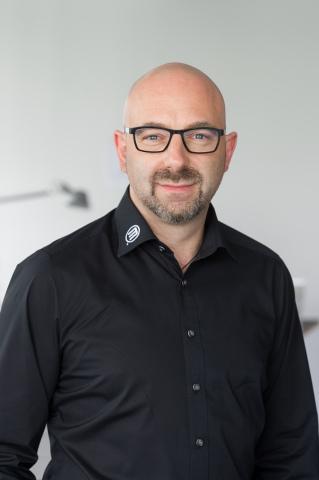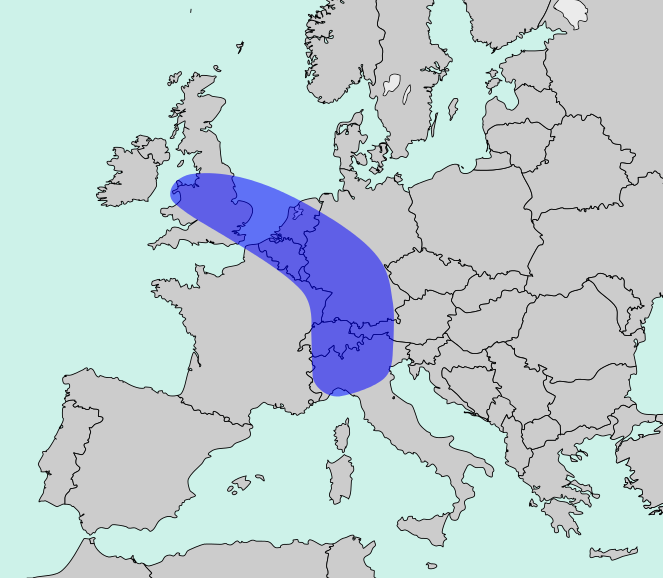Interview with MakerBot Europe GM Alexander Hafner on 6th Generation Replicators, Innovation Centers & More
 3D printing is becoming a global phenomenon, and manufacturers of 3D printers are beginning to realize this. Back in August of last year, we reported on the launch of MakerBot Europe, and the appointment of Alexander Hafner as the general manager of the European division. At the time, MakerBot had become the leading manufacturer of desktop 3D printers in the United States, and they were ready to begin their quest to also conquer the European markets.
3D printing is becoming a global phenomenon, and manufacturers of 3D printers are beginning to realize this. Back in August of last year, we reported on the launch of MakerBot Europe, and the appointment of Alexander Hafner as the general manager of the European division. At the time, MakerBot had become the leading manufacturer of desktop 3D printers in the United States, and they were ready to begin their quest to also conquer the European markets.
In doing so, the company aquired their Germany-based partner, HAFNER’S BÜRO, which was run by Hafner himself. 3DPrint.com had an opportunity to catch up with Alexander Hafner as he prepared to give a talk at Inside 3D Printing Conference Berlin, which takes place this week. His speech entitled “How Much Open Source is Good for 3D Printing” should certainly be an interesting one to listen to, especially since he is now the general manager of a company many people were sad to see remove themselves from the open source hardware scene a couple years ago.
Below you can see our interview with Hafner, where we touched on the progress that the company has made in the European region, as well as his thoughts on recent changes within the MakerBot management team, and the future of the company. We asked him about whether or not MakerBot will ever expand their market to cover other 3D printing technologies such as stereolithography, as well as if he thinks we can expect a 6th Generation MakerBot anytime soon. While his job is focused on managing the distribution, sale, and service of MakerBot 3D printers in Europe, his insight and opinions turned out to be very interesting.
3DPrint.com: What are your thoughts on the recent changes taking place at MakerBot, particularly Jenny Lawton moving onto a position at Stratasys and Jonathan Jaglom taking over as CEO?
Alexander Hafner: Jonathan Jaglom will move over to the New York (MakerBot) office as soon as possible. At the moment, he is wrapping up in Hong Kong, and he also has to wait for his visa. Until then, Frank Alfano — he’s been the president at MakerBot, and I’ve been working with him for almost two years now — is now in charge of the CEO tasks temporarily. I think he’s the right person to do it. He’s a great manager and team leader.
I’m thinking [the management moves] will change the company. It’s one of the steps that MakerBot and Stratasys did decide to work on when they started working together one and a half years ago. From my point of view, related to the region that I’m running (Europe), I find it being a very good move. We’ve always been very focused on B2B business and the education business. Stratasys is talking about how we can better align product portfolios, beginning with the consumer side, and ending up in universities and industries. I think Jonathan Jaglom is the right person to do it.
3DPrint.com: How have the past 6 months been for MakerBot Europe?
Alexander Hafner: Very exciting. I joined MakerBot as a reseller in 2011, and at that point they were clearly a startup. I think that MakerBot, within the last few years, never lost its startup mentality and the fast iterating movement within the company. For my team, the last 6 months have been very exciting. The learning curve that we were able [to accomplish] toward the product, getting deeper inside of what the US [company] did, what they have been working on in the past, what we are working on now for the future and also the overall integration process of getting distribution going for the European regions, it has been very exciting. We did a great job setting up our service centers, and we are working on our first MakerBot Innovation Centers, and we have setup a reseller authorization process which we find very important to have.
3DPrint.com: What are you plans for MakerBot Europe in the upcoming year?
Alexander Hafner: We’ve got a clear vision. What we try to do for the European region, is bringing the brand into Europe. We want to get [to market] the new 5th Generation Machines which we launched last year, and the new materials which we announced at CES. We are looking to set up Innovation Centers in Europe. It is a very important approach. We are getting the message [about the Innovation Centers] out to our customers. We announced them at EuroMold last year, and we will probably have some very good news later within the end of the [1st] quarter or the beginning of the next quarter.
3DPrint.com: So we should see some MakerBot Innovation Centers opening up soon in Europe?
Alexander Hafner: Absolutely. The universities are really asking for it. A lot of them have 3D printers but they are unable to run them on a daily basis. They really can’t train their students on them, therefore the innovation centers are a great help. I think the biggest influence on print time (and uptime) are repairs on the machines, and clogging [issues]. If you have an innovation center that can be serviced by our service centers, that we provide in nine countries (Italy, Spain, Turkey, Austria, Czech Republic, Poland, Belgium, Germany, soon in UK, and in Sweden or Norway) all over Europe, and the functionality of a Smart Extruder, we are able to service the machine or replace the Smart Extruder. This is the thing that the universities really ask for. The innovation centers will change the amount of usage of 3D printers within universities (in Europe). If there is a failure within the 3D printer, we are looking at repair times of less than one week.
We are also working on a program that is called MakerCare for Europe. You will hear more about that at the end of the quarter. With this program, we will also be able to more closely support people who print with our machines. What our technicians do, is they help the customers with their daily 3D printing issues.
3DPrint.com: What countries in Europe provide MakerBot with the most business?
Alexander Hafner: There is something called the Blue European Banana, where the most industries are [residing] and the most people are residing who either invent, or design. It’s a comical business model for the most industrialized regions within Europe. It basically spreads out from Northern Italy to Switzerland, through Austria, and most of West Germany, hitting the Netherlands, moving up to the UK.
On the other side, what we see, and what everyone who is related to desktop 3D printers see, is that our machines do give access to rapid prototyping and real-time prototyping also to regions that don’t have that high of a GDP, and weren’t able to invest in all those more industrial types of 3D printers, like those by Stratasys and 3D Systems. A lot of countries that previously were not able to participate in rapid prototyping are now really [catching on]. The MakerBot Replicator Z18 is a great alternative (to larger industrial level 3D printers) because of its huge build volume compared to other industrial level rapid prototyping machines. It’s very fast, reliable and it can do huge prints.
3DPrint.com: Do you foresee a 6th Generation MakerBot Replicator coming anytime soon?
Alexander Hafner: I don’t think the 5th Generation MakerBot Replicator is a platform that needs a replacement after a year. This was also the reason we didn’t announce any new [hardware] at CES this year. I think with the 5th Generation, we’ve been able to change the industry. If 3D printing really wants to move into the consumer field, we really have to find a way to make the machines serviceable, not just for the DIY guys and technically [savvy] users. Just being able to replace the extruder, I think that has been the approach that we’ve been working on. We’ve been iterating with the Smart Extruder to make it print faster and to find out how we can print best with it, and we will continue doing this with bringing our new materials [to market]. If you have an extruder that can be changeable (and upgradable) you aren’t forced to buy new machines to print another type of filament. So all we have to do is be able to adjust our extruders, the software and the firmware to be able to print all our new materials.
3DPrint.com: I was able to see a lot of your new materials at CES 2015, and I imagine you have even more coming too.
Alexander Hafner: Absolutely. I’m really excited about the new materials that we will be launching within the next quarters. I think the materials, the type of printing, what people print and how they print, those will be topics that we will talk about within the next quarters.
We’ve been working hard to provide APIs into Thingiverse, and we’ve been working hard to provide APIs into our desktop software. We will not be able to develop every type of software and application that will make 3D printing with our machines more efficient. The APIs are a link into the community, and a good link for the community because they will be able to work on a stable platform.
3DPrint.com: Stratasys owns a lot of patents, and they have a lot of great technology. Do you think MakerBot will ever use some of this technology to make desktop 3D printers which utilize stereolithography or other technology, rather than FDM?
Alexander Hafner: That’s a really good question. I think MakerBot stands by FDM 3D printing because it is the kind of printing that can most easily be done on-site without any other types of [post-processing] like finishing or too much cleaning, or washing. We think that we have to make 3D printing easier and more usable for a wider consumer/prosumer customer base. There will come a time when our software and our ecosystem will also be able to print with other 3D printing technologies, but for now I wouldn’t say that there is something in the pipeline.
What do you think of Hafner’s answers? Are you looking forward to seeing what MakerBot has in store for Europe in 2015? Discuss in the MakerBot Europe forum thread on 3DPB.com.
Subscribe to Our Email Newsletter
Stay up-to-date on all the latest news from the 3D printing industry and receive information and offers from third party vendors.
Print Services
Upload your 3D Models and get them printed quickly and efficiently.
You May Also Like
Consolidation in AM: How 2025 Is Shaping the Industry’s New Normal
The first half of 2025 has been marked by a clear shift in the additive manufacturing (AM) industry. Companies are no longer just focused on developing new tech by themselves....
Etsy Design Rule Change Reduces Selection of 3D Printed Goods
Online marketplace Etsy has implemented a rule change requiring all 3D printed goods on the site to be original designs. The update to the site’s Creativity Standards states, ¨Items produced using...
U.S. Congress Calls Out 3D Printing in Proposal for Commercial Reserve Manufacturing Network
Last week, the U.S. House of Representatives’ Appropriations Committee moved the FY 2026 defense bill forward to the House floor. Included in the legislation is a $131 million proposal for...
Transforming From Tourist to Native: Duro CEO Michael Corr Explains Why the Company Rebuilt its PLM Software on AI
In these early innings of the AI boom, many market analysts have expressed concern that AI spend has gotten too far ahead of the technology’s proven ability to deliver significant...




































